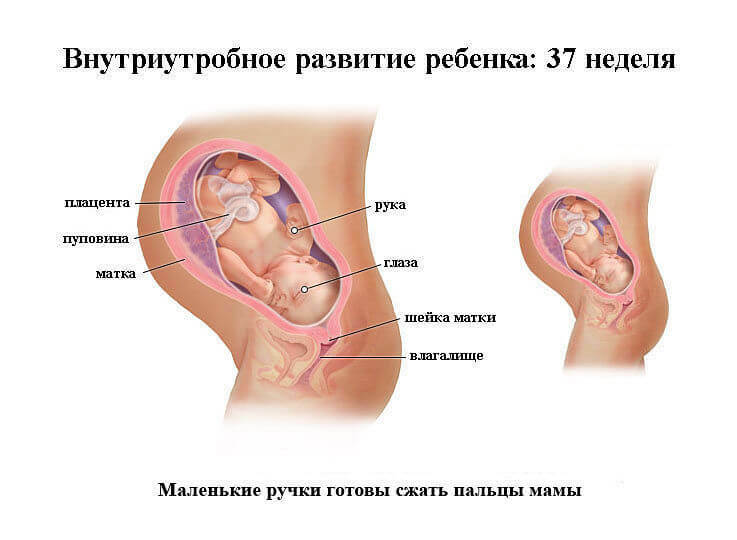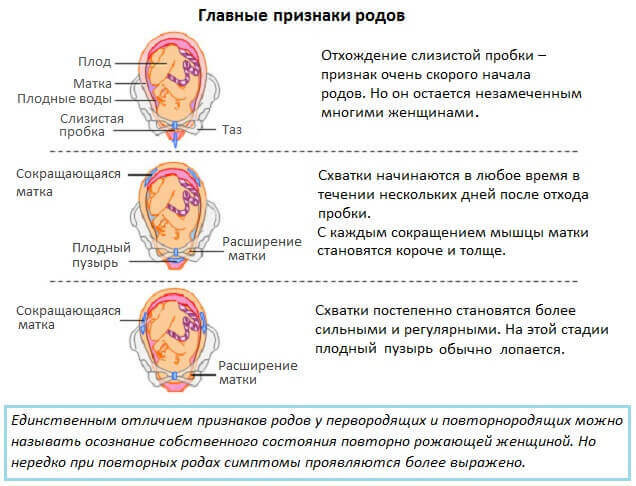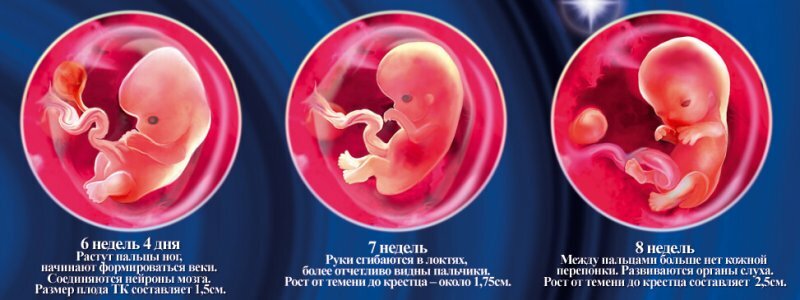37th week of pregnancy: fetal size, precursors of labor

A full 37 weeks is a full term pregnancy. Births can begin very soon, so the future mother needs to be properly prepared: to finish with the choice of the hospital and the collection of things, to think about how to get to the medical institution and decide who will be next when the baby is born.
Table of contents: Fetus at 37th week of pregnancy How does the expectant mother feel? Herbal precursors Possible complications How to recognize the "abnormality" of pain?Necessary examinations Recommendations at Week 37Fetus at 37 weeks of gestation
Internal organs of the fetus are trained to function outside the mother's body:
- Digestive tract contractions - peristalsis appear.The inner surface of the intestine is covered with villi.The pancreas, stomach and liver are preparing to produce digestive enzymes, but they are still far from digesting an adult.Immediately after birth, the baby will be able to digest only mother's milk or milk mixture, and so it will be up to six months.Then enzymes that can split other foods begin to appear.In general, the process of digestion in a baby will last several years, and some food( for example, mushrooms) a child can use and digest only after 3-4 years.

- The fruit simulates the respiratory movements of the , training muscles( intercostal and diaphragm), which very soon will take a direct part in breathing.
- The heart of is active.Now it beats twice as often as mom's, but after birth the heart rate of the baby will gradually decrease.
- The excretory function of the kidney is performed.Fetal urine regularly replenishes the volume of the amniotic fluid.By the way, if the crumbs have problems with the kidneys, the mother may have low blood pressure.
- Fruit is almost always, when not sleeping, sucking a finger.Sucking is an unconditioned reflex that provides a newborn with food.
- All the senses of the baby have been put into operation.Therefore, he distinguishes sounds well, turns in the direction of bright light and grabs the umbilical cord when she touches his calf.

Thus, this week the last preparation of the fetus for birth ends.Now you can not be afraid for his life - if the crumb is born now, he will no longer need special equipment for survival.A happy mother will see a baby weighing about 3 kg, height - 48 cm, with round cheeks, plump handles and legs, hairs on the head and nails on the fingers.
If we talk about the motor activity of crumbs, then with the approach of childbirth it changes.The baby can die for a long time - now his sleep already has a fairly long slow phase of the , during which the muscles relax, so the baby sleeps, "as if killed."In addition, the size of the uterus does not allow the baby to fully straighten the legs, handles, somersault.All that it can - it's a little povorchatsya, beat the fists on the wall of the uterus and hit the heel at the mom under the rib. But in general for a day a woman should note a minimum of 10 periods of motor activity of the fetus.
How does the future mother
 At 37 weeks, the stomach begins to fall, but not at all - it can happen right before birth. In connection with the downward shift of the uterus, the urination of the future mother is even more frequent, there is discomfort in the perineum, the condition of the hemorrhoidal veins worsens, the lower back pains, the legs often become numb.But dyspnea and heartburn, on the contrary, recede.
At 37 weeks, the stomach begins to fall, but not at all - it can happen right before birth. In connection with the downward shift of the uterus, the urination of the future mother is even more frequent, there is discomfort in the perineum, the condition of the hemorrhoidal veins worsens, the lower back pains, the legs often become numb.But dyspnea and heartburn, on the contrary, recede.
Important: severe drowsiness and fatigue are considered normal for 37 weeks of waiting for the baby phenomena.It would be advisable for the future mother to go about her desires and have more rest, since soon such an opportunity will not exist - the kid simply will not give it.In addition, a woman is extremely necessary to gain strength before giving birth.
Many future mothers say that as the time approaches, the "Ч" begin to sense how the pelvic bones part. This is really so - they diverge( in the area of the pubic symphysis), so that the baby can be born.This process can be accompanied by quite unpleasant sensations.However, if the future mother was engaged in gymnastics for pregnant women, went to aqua aerobics and in general was physically active throughout the pregnancy, the preparation of the pelvis for childbirth will pass unnoticed for her.
Harvesting precursors
At 37 weeks of gestation, a woman may notice the appearance of special symptoms, which are called precursors of childbirth:
- Lowering the abdomen. The head of the baby falls into the pelvis of the mother on average 2 weeks before the birth.
- Nausea and diarrhea. The body seems to want to cleanse itself of everything unnecessary before giving birth.
- The exit of the mucous tube. This symptom appears a few days before the onset of labor.The cork looks like a thick yellowish mucus with veins of blood.
- Decreased activity of the baby. He became cramped in the hobby "house", the head was fixed in a comfortable position and held by the muscles of the uterus, so the crumb is not up to somersaults and pranks.In addition, it affects the hormonal background, which before the birth of my mother is radically changed.
- Reduces body weight. Before delivery, the expectant mother may lose up to 1 kg of weight.
- Frequent training fights.
- Instinct of "nesting". I want to clean up, put things together, create coziness in the house - one word for "nest".
-
 Gestosis.
Gestosis. - Vascular pathology.
- Hypertensive disease.
- Blood diseases.
- Endocrine disorders.
- Kidney disease.
- The presence of the myomatous nodes in the uterus.
- Chronic inflammatory processes in the genitals.
- Autoimmune pathologies.
- Smoking of a pregnant woman.
- Direct abdominal trauma.
- Strong stress.
- Pain in the lower abdomen.
- Nausea.
- Soreness in palpation of the area of the postoperative suture.
- "Nois" a loin, coccyx, pelvic bones.
- Periodically "pulls" the lower abdomen.
- Your legs hurt.
- Unnecessary upper and lower limbs.
- The child is hurtfully pushed.
- Continue to attend a woman's consultation and regularly take urine for analysis.
- In case of exit from the mucous plug, refuse to take baths and intimacy.
- Finish collecting things in the hospital.
- Identify with a medical institution if this has not been done previously.
- More rest and outdoor activities.
- Always have documents and a mobile phone with you.
- Monitor your diet.Already now it is possible to familiarize with the list of that is possible, and that it is impossible to the feeding woman, and to start to get used to such diet.

If from the genital tract fluid flows, abdominal pain occurs, as with the monthly, contractions of the uterus become frequent and prolonged, it is worth immediately going to the hospital.These are already reliable signs of the onset of labor of the .
Possible complications
At 37 weeks, the risk of developing fetoplacental insufficiency , increases, which in most cases is associated with premature aging of the placenta .The kid in such conditions begins to suffer from chronic shortage of oxygen and nutrients.Factors contributing to the formation of placental insolvency are: diabetes, arterial hypertension, kidney disease, urogenital infections.
In some situations, disturbance of placental blood flow arises sharply, for example, in case of an infarction or placental abruption. If a woman with this pathology is not provided with timely medical assistance, the fetus may die.The first sign that the baby is not all right is considered to be a change in his motor activity. The kid can stop moving completely or, conversely, become very active.If this is the case, you must always go to the hospital.
Another formidable complication that can develop with the approach of labor is the premature detachment of the placenta.The main causes of this condition include:
An indication of placental abruption is vaginal discharge and severe abdominal pain. If the detachment is partial, these symptoms may not be, therefore it is extremely important for future mothers with the above mentioned diseases to undergo ultrasound and Doppler examination regularly before delivery.
In women who have undergone previous gynecological operations on the uterus or cesarean section, with an increase in the gestational age, the risk of rupture increases.To such patients, doctors are treated with extreme caution, using ultrasound regularly determine the thickness and condition of scar tissue. Signs of a threatening uterine rupture are:
Fortunately, the rupture of the uterus along the scar is a rare pathology.If the state of health allows, a woman who has undergone one cesarean section can independently give birth.The main thing is to tune in and find a doctor who has experience of conducting such births.
How to recognize the "abnormality" of pain?
Many pregnant women are tormented by the question of what pain sensations are considered the norm in their condition, and which require a doctor.We'll figure it out.
At 37 weeks, the feeling of discomfort and soreness in different parts of the future mother's body can increase:
Any of these sensations should not pursue the expectant mother permanently and, the more so, aggravate. If, on the background of pain in the abdomen or lower back, there were spotting from the vagina, severe dizziness, nausea, then something went wrong.In addition, if the soreness is accompanied by a contraction of the uterus, it is also a sign that the delivery has begun, or some complication has occurred.That is, you should immediately go to the hospital
Necessary examinations
 At 37 weeks on the plan, a trip to the gynecologist and a general urine test. After the examination, the doctor can refer a woman to CTG to check the condition of the baby.In addition, a gynecological examination can be performed on the chair.Having probed the cervix of the uterus( usually with the approach of birth the cervix of the uterus is shortened and softened), the doctor will determine how much time remains before the birth of the child and whether the patient is required to be hospitalized.
At 37 weeks on the plan, a trip to the gynecologist and a general urine test. After the examination, the doctor can refer a woman to CTG to check the condition of the baby.In addition, a gynecological examination can be performed on the chair.Having probed the cervix of the uterus( usually with the approach of birth the cervix of the uterus is shortened and softened), the doctor will determine how much time remains before the birth of the child and whether the patient is required to be hospitalized.
Recommendations for the 37th week
A future mother needs:
In addition, women who testify to a planned caesarean section should communicate with a doctor who would like to be operated on.It is necessary to choose the date of the operation and discuss all the exciting issues. Usually, if there are no problems and complications, the planned cesarean section is performed at 39 weeks of gestation.
Zubkova Olga Sergeevna, medical reviewer, epidemiologist-doctor



